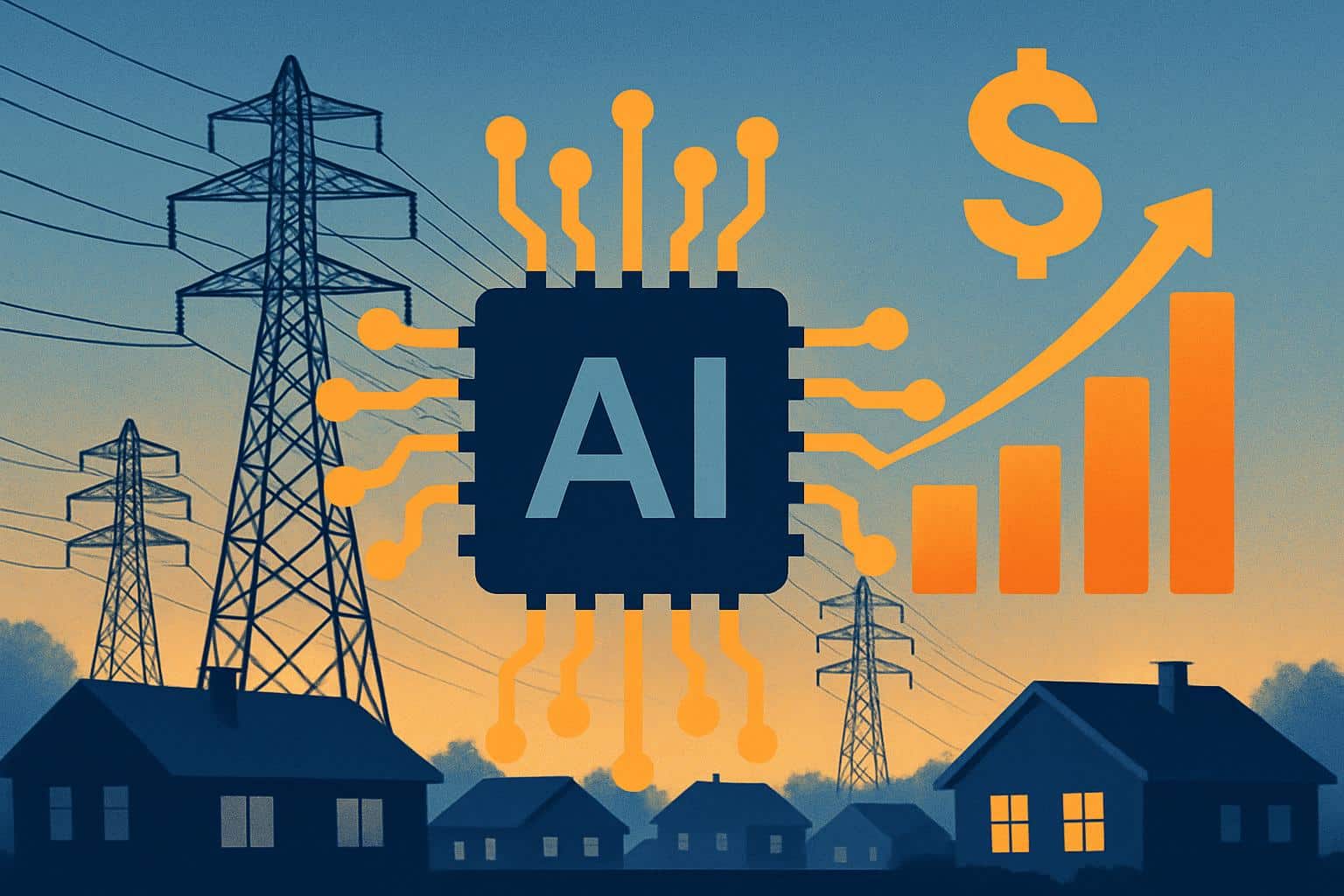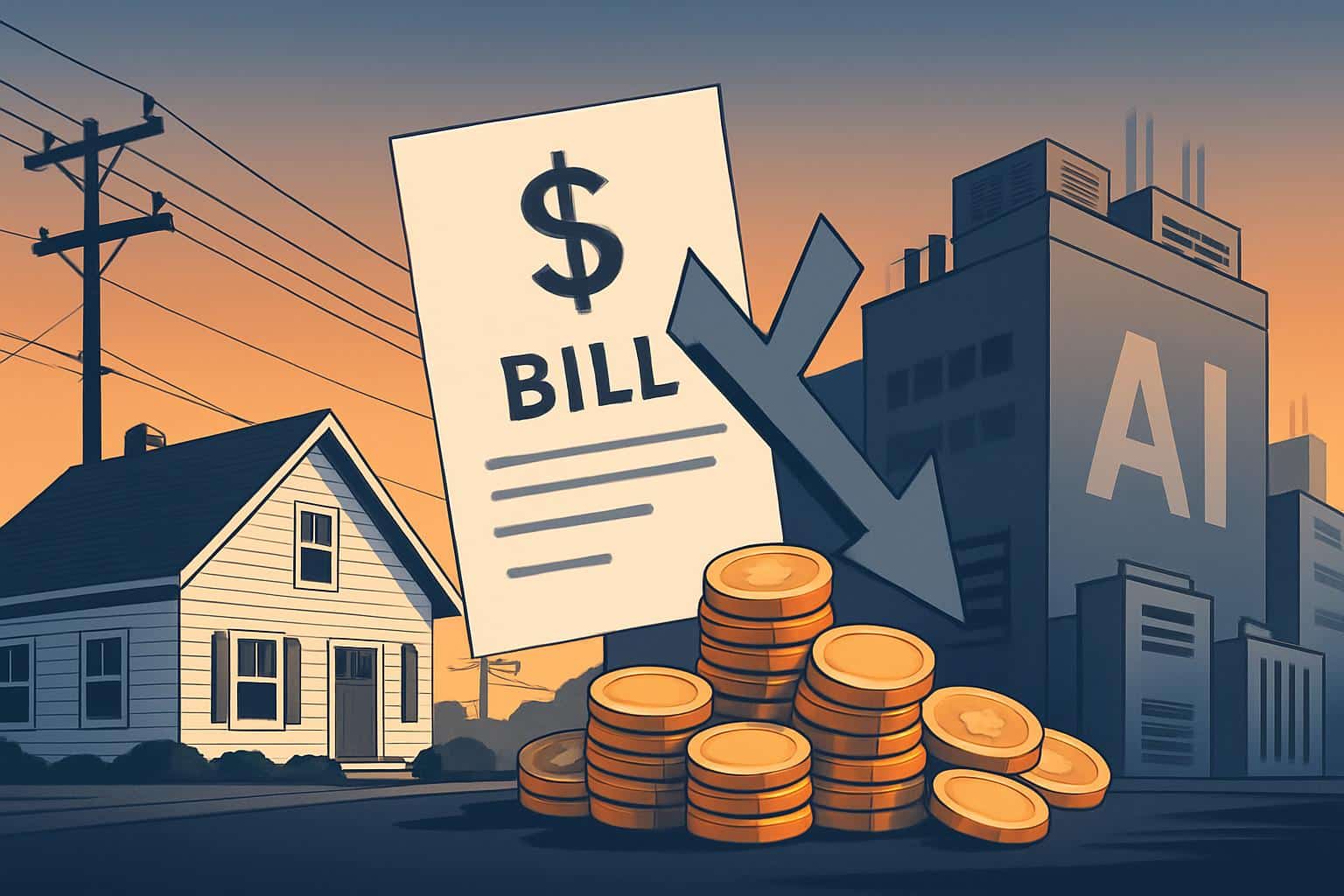As their electricity bills rise, growing numbers of Americans believe artificial intelligence is the source of the problem — not part of the solution. The latest survey from the energy tech firm Arbor shows most people have suffered higher utility bills, and many are now blaming AI data centers. Only a tiny sliver says the benefits of AI outweigh the extra cost.
Why Households Connect AI With Higher Rates
About 70% of households experienced an increase in electricity costs; almost two-thirds attribute it to AI’s power hunger, and only about 20% feel the benefits from technology justify the impact on their budget, according to Arbor. The perception converts into a visible buildout: hyperscale data centers have sprung up across the country, in close-knit clusters from Northern Virginia — now home to the largest, most potent cluster of them all — through Chicago and Phoenix, and on out west beyond Seattle to San Francisco.

In markets where demand is accelerating ahead of supply, wholesale prices and grid upgrade costs tend to percolate into retail rates. Grid operator PJM has repeatedly warned about spiking load from data centers and the amount of time it takes to add new generation and transmission. Local utilities have submitted plans to add capacity — sometimes at great expense — stoking fears that households are subsidizing an arms race in artificial intelligence.
The Grid Struggles to Keep Up With Data Center Demand
AI computing is not for sipping electricity; it’s a guzzler. Training models require bursts of intense computational power, but the actual load is inference — running countless AI queries in real time — which is continuous. The load of a single campus can be hundreds of megawatts, equivalent to that required by a small city, according to utility resource plans and data center industry benchmarks.
Global and national insights reflect the pattern. The International Energy Agency has estimated that data center power use could as much as double in a short horizon with AI playing a large part. The US Energy Information Administration has noted “unusually strong load growth” related to new industrial demand, such as compute. Meanwhile, interconnection queues are sitting like traffic jams, prolonging how long it will take clean generation to catch up.
The imbalance is reflected in prices. Locational marginal prices have spiked in some portions of the Mid-Atlantic and Northeast for tight hours. Analysts who monitor PJM say that more than half of the recent growth in demand and in requests for additional capacity in some zones is coming from data centers, further requiring the building of transmission or fast-ramping gas power or both.

Who Americans Hold Responsible for Rising Power Bills
Consumers have not just been venting at utilities or lawmakers. Arbor’s polling indicates the public holds tech companies themselves heavily responsible, in front of or equally with government and power providers. It is an emotion that matters: People have very little patience when they feel as though they’re paying for someone else’s growth.
Affordability is the breaking point. Most said they could not manage anything more than a modest increase each month, and roughly one in five say they cannot handle any hike at all. When bills rise, people tend to say that they’ll cut usage first, trim other spending second and make improvements that enhance efficiency if the timing lines up. Only a small percentage say they intend to vent their frustration with state regulators or at the ballot box, at least for now.
Are AI’s Boons Worth the Higher Power Tab for Homes?
Just about one-fifth of households sampled believe that the gains of AI outweigh higher electricity prices. That skepticism reflects a divide between who pays and who benefits. For businesses and developers, AI tools can enhance productivity and revenue; for residential customers, there’s spotty convenience — and monthly bills that keep creeping up.
Policy is also shaping perceptions. An executive order indicating an interest in keeping legacy fossil capacity online to meet the needs of data centers, coupled with state proposals to fast-track new gas plants, has stirred up debate. The optics are ugly: If AI takes more dirty or more expensive power in the short run, public goodwill fades. Arbor discovered that a narrow majority would be more in favor of AI’s expansion if it relied on clean energy.
What Might Ease the Backlash Over AI and Energy Costs
- Efficiency: chipmakers and operators alike are scrambling to ramp up the performance per watt via next-gen GPUs, liquid cooling and cleverer workload scheduling. Independent audits by organizations like the Uptime Institute indicate that the best-run facilities can significantly cut waste, even if overall demand may still increase.
- Location and timing: relocating AI buildouts to areas with ample wind, solar, hydro or nuclear — and matching loads to when those types of generation have a surplus — can help ease price pressures on constrained grids. Long-term power purchase agreements can underwrite new clean capacity — but only if transmission keeps up.
- Accountability: more transparent public reporting with respect to data center energy use and impacts on the grid, in conjunction with cost-sharing arrangements, could help address a perception that households are left paying the bill. Makers of renewable energy in PJM and elsewhere are already facing questions about rate design, how power is connected to the grid and the incentives associated with growth if it comes at consumers’ cost.
AI’s moment of promise won’t matter if the public decides the price is too high. The message from homes is clear: keep the lights on, keep bills low and demonstrate that the compute boom provides real benefits — not just to tech giants but for the people paying that power bill.

